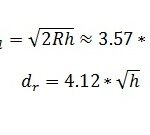In 5G (Fifth Generation) Networks, PCC (Policy and Charging Control) Rules Play a Crucial Role in Managing and Controlling the Policies related to data, Quality of Service (QOS), and Charging for Network Services. PCC is an integral part of the 5G architecture, ENABLING OPERATORS TO IMPLICE DYNAMIC POLICIES BASED ON User, Application, and Network Conditions. Let's explore the details of PCC rules in the context of 5g:
- Definition of PCC:
- Policy and Charging Control: PCC is a Framework that Clogs Both Policy Control and Charging aspects in a unified manner. Itable operators to define and thread police for network resource use and charging based on various criteria.
- Key Components of PCC:
- Policy Control: Policy Control Involves Defining Rules and Conditions that dictate HowWork Resources Should be allocated and managed. These police are Often Based on Factors Such As User Profiles, Application Types, and Service Priorities.
- Charging Control: Charging Control Involves Determining How Users Are Billed for the Services They Consume. PCC Rules Influence Charging Based on the Usage Patterns, Data Volume, and Qos Levels Associated with individual users or services.
- Policy Rules in PCC:
- Dynamic Policy Enforcement: PCC Rules Are Dynamic and can be Enforced in Real-Time, Allowing Operators to Adapt to Changing Network Conditions and User Requirements.
- Granulalar Policies: Policies can be granular, covering aspects such as data speed limits, priority access for specific applications, and differentiated qos levels based on the service type.
- Use boxes for PCC Rules:
- QUALITY OF SERVICE (QOS): PCC RULES ARE INSTRUMENTAL IN DEFINING AND INFORCING QOS POLICIES. Differentiateed qos Levels can be assigned to various services, ENSURING OPTIMAL PERFORMANCE FOR APPLICATIONS With Specific LateNcy and Reliability Requirements.
- Network Resource Allocation: PCC Rules Influence How Network Resources, Such As Bandwidth and Priority Access, Are Allocated Among Users and Services. This Efficient Efficient Utilization of Network Capacity.
- Charging Models: PCC Rules Determine The Charging Models for Different Services. This included considers for flat-rate billing, use-based billing, and various other charging mechanisms based on the specific requirements of operators and service plans.
- Dynamic Adaptation to Network Conditions:
- Real-time Decision Making: PCC Rules Operate in Real-Time, Allowing the Network to Make Dynamic Decisions Based on the Current State of the Network, User Behavior, and Application Requirements.
- Load Balancing: in Scenarios of Network Congestion, PCC Rules can be configured to Dynamicalely Balance the Load by Adjusting Policies to Optimize Resource Usage and Maintain Service Quality.
- Policy Decision Points (PDP) and Policy Enfurcement Points (PEP):
- PDP: The Policy Decision Point is Responsible for Making Policy Decisions based on predefined rules and criteria.
- PEP: The Policy Enforcement Point Enforces The Decisions made by the PDP by Implementing the Policies in the Network.
- Integration with Charging Systems:
- Charging Integration: PCC is Closely Integrated with Charging Systems to Ensure that the Policies Defined for Resource Use Align with the Charging Mechanisms in Place.
- Use Records: Use Records Generated Based on PCC RULES ARE OFTEN USED FOR CARGING PURPOSES, Providing DETAILED INFORMATION ON howwork Resources Were Utilized.
- Application of PCC in Different Network Deployments:
- Standalone (SA) and Non-Standalone (NSA) Modes: PCC Rules APED in Both SA and NSA Modes of 5G Network Deployment, Providing Operators With Consist Policy Control and Charging Capabilities.
- Standardization:
- 3GPP Standards: PCC Rules Are Specified and Standardized by the 3rd Generation Partnership Project (3GPP), which develops the Technical Specifications for Mobile Communication Standards, Including Those for 5G.
In Summary, PCC Rules in 5g Are a Dynamic and Integral part of the Network Architecture, EnaBling Operators to Define, Enforce, and adapt Policies for Resource Usage, Qos, and Charging in Real-Time. The flexibility and granularity of PCC rules contributes to efficient network management and the deliver of various services with varying requirements.
